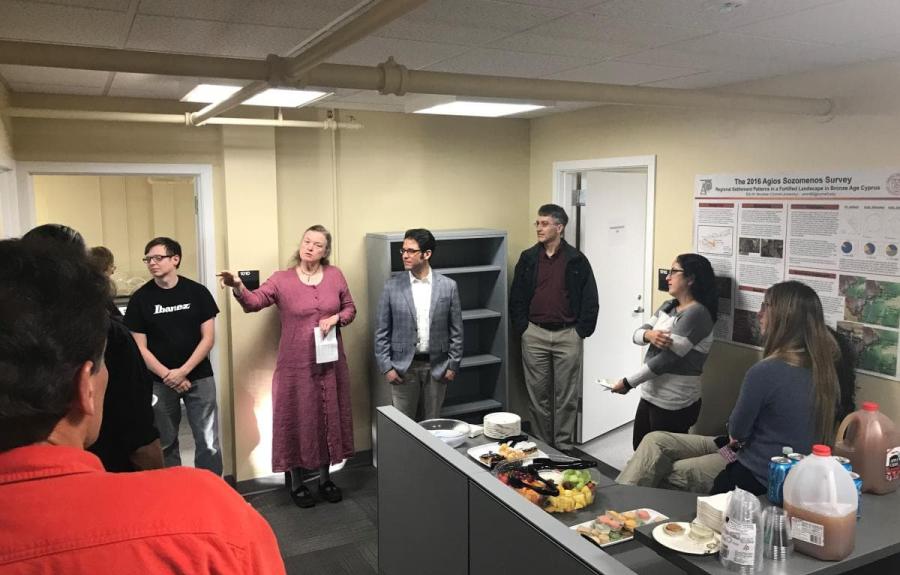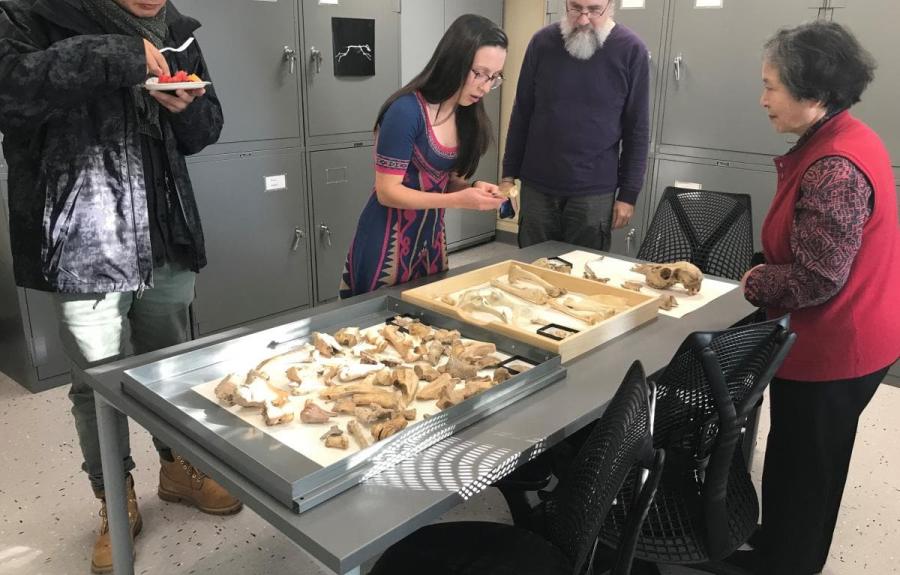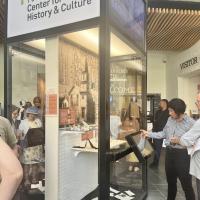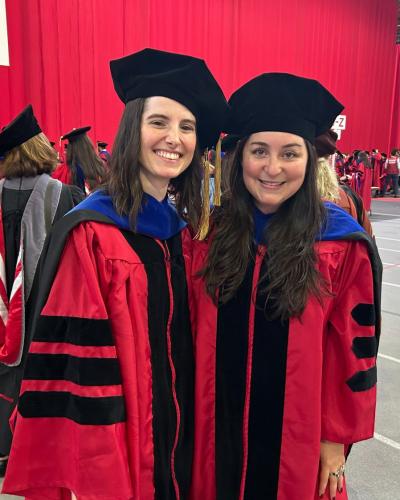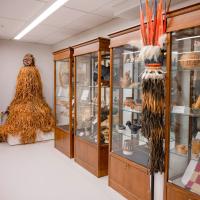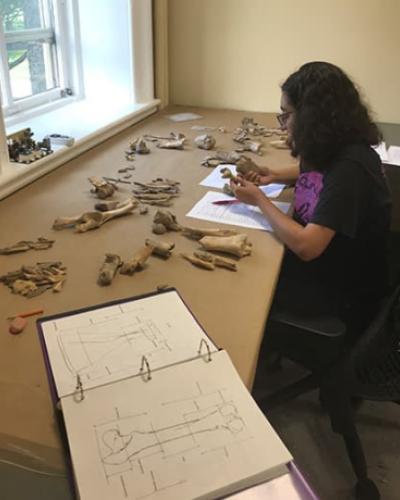CIAMS is excited to announce the opening of HABLAB (the Human and Animal Bone Laboratory) in 101 McGraw Hall. This suite of spaces was renovated over the past year to house three laboratories dedicated to research and teaching in skeletal analysis. A new office space, located in the labs’ vestibule, will serve as an administrative home for CIAMS and display the latest research by affiliated faculty and students.
A Grand Opening celebration was held on October 18th, attended by students, faculty, staff, and members of the Cornell administration including Senior Associate Deans of the College of Arts & Sciences Ted O'Donoghue (who supports the Department of Anthropology), and Andy Bass (who supports CIAMS and Archaeology).
The first lab is that of Prof. Nerissa Russell, Cornell’s zooarchaeologist and professor in the department of Anthropology. Zooarchaeology is the study of animal and human relations in the past, through faunal remains, including questions about culture and society, diet (both human and animal), and domestication. Prof. Russell’s work focusses on the Neolithic of the Balkans and Near East, and the lab will serve as her research space and will hold her comparative collection of animal skeletons, used both in research and graduate and undergraduate education. Prof. Russell is currently studying bird remains from early Holocene sites in Turkey.
Across the vestibule, the matching laboratory is directed by Prof. Matthew Velasco, assistant professor in Anthropology. Prof. Velasco is an anthropological bioarchaeologist who studies ancient peoples of the Andes through the analysis of their skeletal remains. His lab will promote undergraduate and graduate training in human skeletal analysis, using comparative medical collections curated by the late Cornell professor Kenneth Kennedy. Prof. Velasco’s current research explores how social and ethnic identity shaped health outcomes during a time of war in the ancient Andes.
Between these two labs, there is a new teaching laboratory, including a new digital projection system, that will be used as classroom space for practical methodology courses in faunal analysis and bioarchaeology. All three labs have been furnished with new lab benches, tables and chairs, and plenty of storage space. Additionally, several of the lab benches include ergonomic, automated height adjustment, which will improve accessibility of the space for students and researchers who may need to use wheelchairs or other mobility devices, as well as allowing researchers to adjust from sitting to standing positions.
CIAMS looks forward to the exciting research and teaching that these new spaces will enable!

